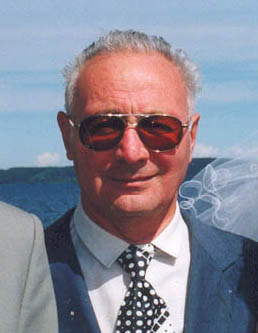Courtesy of Haydn Shaughnessy, Contributor,
“I write about enterprise innovation”
Tech 3/07/2013 @ 6:32AM |50,392 views Forbes Magazine
What Makes Samsung Such an Innovative Company?
The Samsung headquarters (Photo credit: Wikipedia)
There are critics of Samsung who argue that its success is mostly due to copying and then tweaking the innovations of others. There is a good deal of truth in this, especially around the early Galaxy designs.
But Samsung is a global leader in screen technology, TVs, batteries, and chip design. So in terms of innovation it is doing a lot right. But we know very little about how.
We know how its competitors innovate – we look at Google and see the 20% time, the big adjacencies, the search for disruption, the bold statements about the future of autos, for example.
Samsung Engineers Perfect Marketing Storm For Galaxy S4 Ahead of 14th March Solving Apple's Innovation Problem 
We know that within Apple when a project gets to a critical stage, the company assigns three teams to its development, each of which competes against the other. We know the importance of design thinking, an attribute Google is learning about. And of customer experience.
What does Samsung do in comparison? How does it line up against these American masters or conversely are Google and Apple good enou gh to compete against Samsung?
gh to compete against Samsung?
There’s no doubt that patent circumvention is an aim when Samsung innovates. From its early forays into innovation, competing against Toshiba in washing and drying machines, Samsung has chased patents in areas where its competitors appear to have protection and has oriented its innovation efforts to find new patentable ideas in its competitors’ backyard (see, for example, this Samsung presentation).
There’s nothing unusual about that. It is a sideshow. Two developments convinced the company in the late 1990s and early 2000s that they could adopt a systematic approach to innovation and that is what seems to underpin their current success.
The first development provides a broader explanation for Samsung’s innovation capacity. In the late 1990s they were able to tap into a source of cheap scientific expertise in the former Soviet Union.
Samsung has nurtured a close relationship with the Russian Academy of Science since then. There is a framework agreement between the two parties. And the Korean Government has its own agreement under which it funds Korean small businesses to develop projects on the back of Academy research. Samsung meanwhile appears to help the Academy to increase its patent count and to exploit its inventions.
There is an undated copy of the framework agreement between them online and here is an extract:
Academy warrants that Institutes of RAS have the necessary authority to transfer Inventions on separate contracts (“Concrete Agreement”) to Samsung for evaluation, and support Samsung to share part in ownership of Inventions and Patents
One early advantage for Samsung was cheap fundamental science from Russia. But even now Samsung is able to buy Russian expertise at relatively low rates of between $3,000 to $5,000 per month.
Compare that with Google and Apple – in the post-9/11 era access to the world’s best talent has become increasingly difficult because of a reluctance to grant enough visas. Samsung had that problem cracked. But then again didn’t Apple and Google – both are a magnet for talent.
Has the Russian connection shown concrete value for Samsung?
- Details
- Category: TRIZ Features
TRIZ Feature
Alexander Selyutsky - a key figure in the history of TRIZ!
Selyutsky Alexander Borisovich was born April 6, 1933 to an intelligent Jewish family residing in Leningrad. During the World War II the plant where his father was working was evacuated to the Urals, and the family (the parents and Alexander) moved to Chelyabinsk. Here, Alexander graduated from high school. He wanted to go to a military school, but didn’t pass vision test and entered the Chelyabinsk Polytechnic Institute. In his first year he was forced to learn boxing (because of frequent anti-Semitic attacks) and became a Komsomol activist.
After graduation, he was sent to Petrozavodsk Onega tractor plant, where he worked as a designer. He continued leading a very active social life, organized and led voluntary militia patrolling the streets of the city because the situation was very criminal. In the search for more satisfying work he became interested in patenting, completed appropriate courses and became a patent agent.
In 1960, Alexander married Dolly Naumovna Audleys, and had a daughter Alla in 1961. The same year G.S Altshuller published a book " “Learn how to invent"[1] . After reading this book in 1965 Selyutsky wrote a letter to Altshuller. This letter started their acquaintance by correspondence. Since then, Alexander became one of the most dedicated Altshuller’s disciples and an active promoter of the emerging new science.
They finally met in 1968 in Dzintary (near Riga), at the seminar organized by the Central Board of VOIR (state leading inventors’ and innovators’ society) that invited Altshuller and several of his associates. It was the first time that Alexander and others got a chance to work under the direct guidance of Altshuller and to learn from him. Later, in 1983, Alexander participated as one of the instructors in the seminar conducted by G.S. Altshuller in Moscow at the Institute for continuous education for chemical and petroleum industries.
- Details
- Category: TRIZ Features
Quantifying the TRIZ Levels of Invention – A tool to estimate the strength and life of a Patent Navneet Bhushan Crafitti Consulting Pvt Ltd, (www.crafitti.com) Email: This email address is being protected from spambots. You need JavaScript enabled to view it. Bangalore, INDIA
Introduction
TRIZ (Theory of Inventive Problem Solving) classifies inventions into five novelty levels (For example see [1]). At level 1 are slight modifications of the existing systems. Typically they are localized within a single sub-‐system. At level 2 are those inventions that resolve a system conflict or contradiction (called a technical contradiction between two parameters of a system), using usually inventive solution or inventive principle used to solve similar problems in other systems. This is what resulted in the most used TRIZ tool of contradiction matrix and 40 inventive principles. In fact, since 77% of inventions were at level 1 or level 2, TRIZ in popular press and by many consultants/trainers have been reduced to exploring and explaining contradiction matrix and 40 inventive principles. However, it is the deeper understanding that leads to level 3 and above inventions where TRIZ can be very powerful. At level 3, the inventions change one subsystem or resolve the system conflicts in a fundamental way.
- Details
- Category: TRIZ Features
By Haydn Shaughnessy, Contributor, 
“I write about enterprise innovation”
Tech 3/07/2013 @ 6:32AM |50,392 views Forbes Magazine
Full article at: http://www.forbes.com/sites/haydnshaughnessy/2013/03/07/why-is-samsung-such-an-innovative-company/
Samsung is a global leader in screen technology, TVs, batteries, and chip design. So in terms of innovation it is doing a lot right. But we know very little about how.
Two developments convinced the company in the late 1990s and early 2000s that they could adopt a systematic approach to innovation and that is what seems to underpin their current success.
The first development provides a broader explanation for Samsung’s innovation capacity. In the late 1990s they were able to tap into a source of cheap scientific expertise in the former Soviet Union.
In 2009 BusinessWeek reported that Samsung relied on its relationships with Russian experts for its smartphone software development, adding: “Russian brains helped Samsung develop the image-processing chips in its digital TVs and refine its frequency-filtering technology that significantly reduced noise on its now-ubiquitous handsets.”
But a second effect of the relationship with Russian science was the introduction of TRIZ, an innovation method that Samsung adopted from 2000 onwards but which only reached American companies from the mid-2000s onwards (Intel is a user).
TRIZ is a methodology for systematic problem solving. Typical of its origins in Russia, it asks users to seek the contradictions in current technological conditions and customer needs and to imagine an ideal state that innovation should drive towards.
Samsung had early successes with TRIZ, saving over $100 million in its first few projects. It was also adopting Six Sigma at the time.
But it was TRIZ that became the bedrock of innovation at Samsung. And it was introduced at Samsung by Russian engineers whom Samsung had hired into its Seoul Labs in the early 2000s.
In 2003 TRIZ led to 50 new patents for Samsung and in 2004 one project alone, a DVD pick-up innovation, saved Samsung over $100 million. TRIZ is now an obligatory skill set if you want to advance within Samsung.
At the Samsung Advanced Institute for Technology, Hyo June Kim, who wrote The Theory of Inventive Problem Solving, a foundation text on TRIZ published in Korean, trained over 1,000 engineers across Samsung companies in 2004 alone.
What we know from this is how Samsung approaches innovation. Rather it is based on developing a creative elite. This explains how Samsung used TRIZ to get to its Super AMOLED displays.
Samsung Electronics has a sense of crisis that we have been a fast follower and we can not survive anymore in this position. Instead of leading the industry by developing innovative products, we have followed fast what the leading companies had developed. Top management pointed out this and asked employee not to be a fast follower, but to be an innovative leader.
At Samsung even the subsidiary CEO has to take TRIZ training. From looking at the various presentations I estimate that engineers get about 15 days of training plus 7 days specific project work. That’s quite an investment in method and people.
So the answer to why Samsung is so innovative – with at least two major product announcements this month – is that it is heavily invested in its people, it goes in search of special talent wherever it can find it, but specifically made astute moves into Russia early on; it targets its innovations towards specific competitors and patents that it wants to overhaul (as Apple did under Jobs); and it has an innovation culture based on extensive training, repeatable methodology and creative elite formation, backed by the highest levels of management.
To read the full article, click the link above.
- Details
- Category: TRIZ Features
TRIZ Feature
Is anti-virus a Necessary Evil?
Using TRIZ Ideality and Contradictions to find out
what is Necessary and what is Evil
By- Umakant Mishra, Bangalore, India
This email address is being protected from spambots. You need JavaScript enabled to view it., http://umakant.trizsite.tk
Using Ideality to determine what is desirable
According to the concept of Ideality, the best anti-virus is “no anti-virus” or a “virus free environment where there is no need of any anti-virus”. However, for many practical reasons the above Ideal Final Result (IFR) is not possible to achieve in the present circumstances. When the ultimate IFR is not possible to achieve the problem solver has to take a step backward and consider a lower level IFR1. The best solution is that which is closest to the Ideal solution. The best solution is that which fulfils all the desirable functions of an anti-virus program without having any of its drawbacks.
- Details
- Category: TRIZ Features
Inside TRIZ
Case Study: Applying Triz in a non-technical setting for a fuel-cell start-up
By Jean-Francois Denault
1. Abstract
TRIZ is a systematic tool used to generate creativity and solve technical problems, but there is little litterature of its use in non-technical situations. This brings up the question: How can TRIZ be used to generate creativty and solve a non-technical problem?
The objective of this experimentwas to use TRIZ in a non-technical setting. As such, the article is very exploratory in nature. Working with a private company, we identified and defined a non-technical problem, and experimented with TRIZ to generate creativity in an attempt to solve the problem. KEYWORDS: Creativity, Brainstorming, TRIZ, Problem Solving
2. Introduction
2.1TRIZ in a non-technical setting
TRIZ is a Systematic Tool which is used to generate creativity to solve technical problems. Since it is a powerful tool to generate ideas, there is an incentive to use it in a non-technical setting as a creative thinking tool. For example, Zlotin believed that TRIZ concepts, such as ideality, contradiction and the systems approach are fully applicable to non-technical problems, and that analytical tools and psychological operators are directly applicable to accommodate non-technical applications (Zlotin, 2000).
Brainstorming (BS) is the “standard” method for creative thinking. However, when comparing BS to TRIZ, BS’s random nature becomes apparent. Where as BS can be described as “a way of looking for an idea accidently”, TRIZ is “equipped with technique, process, and knowledge database as a comprehensive methodology of a creative solution of a problem” (Nakamura, 2001). This makes TRIZ an attractive tool to explore.
- Details
- Category: TRIZ Features
TRIZ Features

Dana W. Clarke, Paul Nobles and Peter Ulan
Why Do We Need Innovation?
It’s all about the money;
unresolved problems = financial losses and lost opportunities
By Dana W. Clarke, Paul Nobels and Peter Ulan
“Innovation is the most vital factor in shaping a corporation’s success throughout the coming years. For several decades, corporations have optimized products, processes and services for efficiency and quality; without losing control of quality, it is now time to innovate. Today’s corporate challenge is to unshackle its innovation capacity to control growth and profitability while achieving leadership in its targeted markets. Global-economic forces and financial constraints have made innovation-driven growth more essential than at any other time in history. Corporations face an unprecedented need to stay ahead of continuously accelerating global changes, unyielding pressure for rapid results, and fierce competition from corporations that are aggressively pursuing their own innovation-driven futures.”
- Details
- Category: TRIZ Features
TRIZ Features
 April 2012
April 2012
Dr. Toru Nakagawa
Creative Problem-Solving Methodologies TRIZ/USIT: Overview of My 14 Years in Research, Education, and Promotion
The capability of solving problems creatively is most desirable and indispensable not only for individual persons, regardless a student or a working adult, but also for companies, organizations, communities, and even countries. Since I joined Osaka Gakuin University in 1998, I have been working principally on the theme of 'methodologies for creative problem solving' in research, education, and promotion of social penetration. On retiring the University in March this year, it is my great pleasure to have a chance of publishing here an overview of my work for these 14 years.
The core of my working activities has been the research on TRIZ ('Theory of Inventive Problem Solving') and USIT ('Unified Structured Inventive Thinking'). I have attended and presented at international conferences on TRIZ every year, and extended USIT (i.e. a unified and simplified TRIZ) further to find a new paradigm called 'Six-box Scheme' for creative problem solving. In the field of education, besides several other classes on ordinary information science, I have been teaching on this theme in a lecture class and also in 3rd and 4th year seminars, where my students and I have made several successful case studies of solving familiar problems.
- Details
- Category: TRIZ Features
 March 2012
March 2012- Details
- Category: TRIZ Features

Studies have estimated that only one out of 3000 raw ideas (unwritten) or 300 submitted ideas makes it to eventual success. At each stage gate, decision makers select the ideas to be taken forward and identify the ones to be kept on hold or discarded. By applying TRIZ, we can take inspiration from living systems – cells, organisms, ecosystems, organizations, societies etc. to manage our complex systems better.
- Details
- Category: TRIZ Features

- Details
- Category: TRIZ Features
TRIZ Features
 April 2011
April 2011
Cathie M. Currie
Cathie M. Currie, Ph.D. is a cognitive social psychologist who specializes in medical and science education. She heavily engaged with problem solving and innovation thinking skills, authentic assessment, and minority access to higher education. She is also an Advisor to Altshuller Institute.
In an attempt to understand how to better teach TRIZ, Dr. Currie has written and article to explain, in simple terms, the various methods of how people learn. Dr. Currie contends that tinkering, a cherished hobby of yesteryear, has reemerged as a novel catalyst for student engagement and higher-level thinking in thousands of school classrooms and after-school programs across our country. We can intuitively perceive that tinkering stimulates active participation in learning. However, educators need to know how cognitive and educative gains are produced in tinkering experiences to allow us to maximally develop the educative experience.
- Details
- Category: TRIZ Features
TRIZ Features

Jose M. Vincente-Gomila
Predicting new business models with TRIZ
This article from Jose Vincent-Gomila,a well-known TRIZ provider form Spain. His approach to use TRIZ in business applications will help you understand complexity and diversity of the TRIZ methodology. The view of systems is not exclusive to TRIZ, however the integration of system vision, functions described as S-field interactions and Ideality Law of Evolution are about TRIZ. These bundled together can help organizations to value its business model and go one step beyond by defining new business models. For more information click below.
- Details
- Category: TRIZ Features

TRIZ Features
December 2010
Dr. Noel Leon
This article is from a diehard TRIZ practitioner and educator, Dr. Noel Leon, from the Center for Innovation in Products and Technology, Tec de Monterrey. This paper was delivered at TRIZCON2008.
The purpose of this paper is to describe the development process of a new solar collector concept that allows achieving the performance of vacuum tube solar collectors but at the price of flat plate solar collectors. It is shown how the TRIZ methodology helped to solve technical and physical contradictions during the development process.
It is considered that the success of the project was mainly because of the use of TRIZ. This allowed breaking paradigms that made solar collectors expensive or not very efficient.
- Details
- Category: TRIZ Features
TRIZ Features
November 2010
Charoenchit Panpetch
THEORY OF DEVELOPING CONCEPTUAL BASES: THE PARTICULAR APPROACH TO EVOLUTION
In this paper, Mr. Panpetch provides a detailed scholarly view of evolution. The Theory of DCB defines how evolution works in terms of the single process and how it becomes different. This Theory can provide the explanation to all kinds of evolution. He then presents the systematic tools for each activity of evolutionary studies.
Abstract
Among the great diversity and similarity of the universe, philosophers, scientists, theologians seek to relate one phenomenon to another and to recognize the causes and effects of phenomena. In this way, they have developed explanations for the changing of the seasons, the movements of the sun and stars, the structure of matter, the history of life on Earth, and many other occurrences.
Alternative models, processes, formulas, and theories in many areas are developing to help our understanding of how the universe works. The theory of evolution is one of the most important ideas ever generated by the application of scientific methods to the natural world.
Evolutionary theories incorporate a large body of scientific facts, laws, tested hypothesis, and logical inferences but it is much harder to support scientifically all things in one process, one model, one formula, or one framework. This is because of the great diversity and similarity among the universe, the development of an explanation for the change of everything is so difficult. Today, we see evolution plays in many theories having explanation can not be applied to different kinds of evolution.
For instance, biological evolution provides an explanatory framework for the processes of natural change, but that it can not be applied uncritically to cultural phenomena, the evolutionary formulas for making a universe and making life can enable everything- with the exceptions of man-made things, such as computer or buildings, and of complicated things, such as wooden boxes with nails in them, require thought, intelligence, and careful workmanship.
This research underscores the importance of studying a theory that can explain how evolution works in terms of one process, one model, or one framework and that can be applied to all kinds of evolution. The DCB theory of evolution is now required.
- Details
- Category: TRIZ Features
TRIZ Features
![]() September 2010
September 2010
Determining Qualitative Parameters Using TRIZ for Estimating IP Value of Intangibles
One of the primary issues faced by the knowledge economy is the valuation of intellectual assets. Intellectual assets are generally categorized into, Intellectual property (Patents, Trademarks, and Copyrights etc.), explicit knowledge (specific business related processes, methodologies and procedures etc.), and human resources. Value may be defined as the worth or the economic benefit that accrues for the intellectual assets to the owner over a time period. Valuation of any of these intangible asset is essential for financial reporting, M&A, commercialization, securitization, sale, calculating damages on IP infringement etc. However, valuation of each of these intellectual assets and most typically, valuation of technology assets/patents poses a problem unique to it and can be complex in nature depending on the situation. Further, the absence of organized trading in intangibles has been a major hindrance to their recognition as actual intangible assets in financial reports. Currently, there are a number of methods commercially available for valuation of patents or technology. However, these methods do not take into account the intrinsic value or technological merit of any technology asset or patents and therefore, companies usually prefer to adopt conventional techniques financial methods of valuation, which we believe is incomplete and does not reflect the real value of technological intangible assets. Hence, it is essential for companies to consolidate the IP value of an intangible asset along with the financial value to derive the actual value of the asset. In this paper, the authors use the TRIZ methodology to derive the factors and parameters that influence the IP value of a technological asset and more particularly, a patent and then use this factor along with the financial value to determine the actual projected value of an intangible asset.
- Details
- Category: TRIZ Features
TRIZ Features
June 2010
 John W. Stamey, Coastal Carolina University, Conway, SC This email address is being protected from spambots. You need JavaScript enabled to view it.
John W. Stamey, Coastal Carolina University, Conway, SC This email address is being protected from spambots. You need JavaScript enabled to view it.
Richard Peterson, North Carolina State University, Raleigh, NC This email address is being protected from spambots. You need JavaScript enabled to view it.
TRIZ in Technology Education: Perceptions of Future Teachers
The support TRIZ provides for creativity during the invention process makes it ideally suited for the field of Technology Education. Technology education provides instruction in the content areas of manufacturing, communication, transportation and construction. As creativity has long been an important part of the technology education curriculum in middle schools and high schools, a study of the perceptions of TRIZ by future technology education teachers was seen to be a first step toward the introduction of TRIZ into the curriculum. A group of masters-level and doctoral-level students in Technology Education students at North Carolina State University received a TRIZ workshop which included training on the methodology as well as time to use the techniques to solve problems particular to technology education. This article reports the perceptions of future technology education teachers about TRIZ and its potential use in the classroom.
- Details
- Category: TRIZ Features
TRIZ Article


New Tools for Design
Cal Halliburton and Victoria Roza
“True inventions require the determination to solve multiple problems in order to overcome contradictions and yield creative solutions.”
In this classic article, Cal Halliburton has condensed and simplified the core of TRIZ application for everyone to easily digest and apply. Cal is a teacher by trade and he spent years studying TRIZ from various TRIZ Masters. His style is simple and effective. I am sure that you will enjoy this article and learn a great deal in the effort.
- Details
- Category: TRIZ Features

